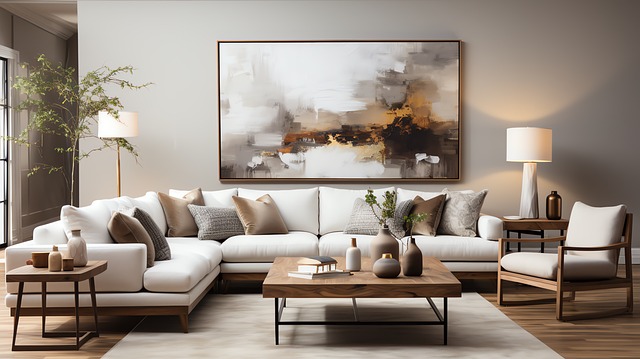It’s a fairly common practice for homeowners to place area rugs on their hardwood floors, as much for decor as for protection. But there are ways to use area rugs optimally, and there are ways that the rugs themselves could have unintended consequences for your floors. Fortunately, if you take a few precautions and place your rugs strategically, those rugs can add warmth and beauty to your space while offering maximum protection. The following guide tells you what you need to know.
Why Use Rugs on Hardwood Floors?
By adding rugs to your hardwood floors, you not only enhance the aesthetic appeal of your rooms but also provide a layer of protection to your floors. Rugs help to prevent scratches and scuffs caused by foot traffic or furniture movement. They also add warmth to your space, making it feel more cozy and inviting. Furthermore, rugs act as a sound buffer, reducing unwanted echoes throughout the space.
Tips for Optimal Rug Choice and Placement
Determining where to place your rug largely depends on the room’s layout and function. In living rooms, a common practice is to center the rug under the coffee table, with furniture either all on or partially on the rug. For dining rooms, ensure the rug extends past the dining table so chairs remain on the rug even when pulled out. In bedrooms, rugs are typically placed under the bed but should extend beyond the sides for a balanced look.
Size and Shape
The size and shape of your rug should optimally complement the room and furniture arrangement. A small rug in a large room can make the room feel disjointed, whereas a rug that’s too large may overwhelm the space. For a single area rug, as a general rule, there should be 10-20 inches of bare floor between the edges of the rug and the walls of the room. You can also place small complementary rugs in different parts of the room for a more original or even “boho” look. And in most rooms, you can protect high-traffic walkways with longer, thinner “runners” that tend to look good in most spaces.
When it comes to shape, rectangular rugs work well in most spaces, but don’t shy away from round or oval rugs, especially in smaller spaces or to highlight certain furniture pieces.
Colors and Patterns
When it comes to colors and patterns, the possibilities are practically limitless. The rug should either complement or contrast with your furniture, and its color should enhance the overall look of the room. For small areas such as entryways, opt for lighter shades that won’t overpower the space. When choosing a patterned rug, make sure it complements but doesn’t compete with the other patterns in the room.
Tips for Preventing Damage
Ironically, without taking certain precautions, your area rugs can potentially damage the very floors they’re intended to protect. Let’s discuss some common-sense tips to prevent this from happening.
Use a Rug Pad
Rug pads are essential because they provide a barrier between the rug and the floor, preventing unwanted scratches and scuffs from rug slippage. Additionally, rug pads can add extra cushioning, making them easier on the feet.
Rotate Rugs (and Furniture, When Necessary)
If you leave rugs in place for a long period of time, you will likely begin to see a notable difference in appearance between the covered and uncovered areas of your floors. This is because the covered areas haven’t had the same exposure to daylight, foot traffic, etc. To avoid uneven fading or wear on your hardwood floors, it’s a good idea to periodically rotate your rugs, especially if they’re in a sunny spot or high-traffic area. By changing their position, you distribute the wear evenly over the floor. If your rugs are under furnishings, you may want to consider moving the furniture around, as well, for much the same reason.
Clean Rugs Regularly
Dirt and dust can collect under rugs, acting like sandpaper and potentially scratching your floors. Regular cleaning, both of the rug and the floor underneath, will help prevent this from happening. (Pro tip: If you use a vacuum with a beater brush on an area rug, make absolutely certain to keep the vacuum only on the rug itself. Don’t let the brush bristles touch the wood floor on the edges to avoid scratching the floor. (Better yet, just turn the beater off when vacuuming the area rugs.)
With the right placement, size, and care, rugs can enhance the beauty of your hardwood floors while preserving their quality and integrity. If you’re considering hardwood flooring installation in Tulsa, Oklahoma City, Broken Arrow, Catoosa, Owasso, or other parts of Green Country, our team will be happy to provide a complimentary quote. Contact us here to learn more.

